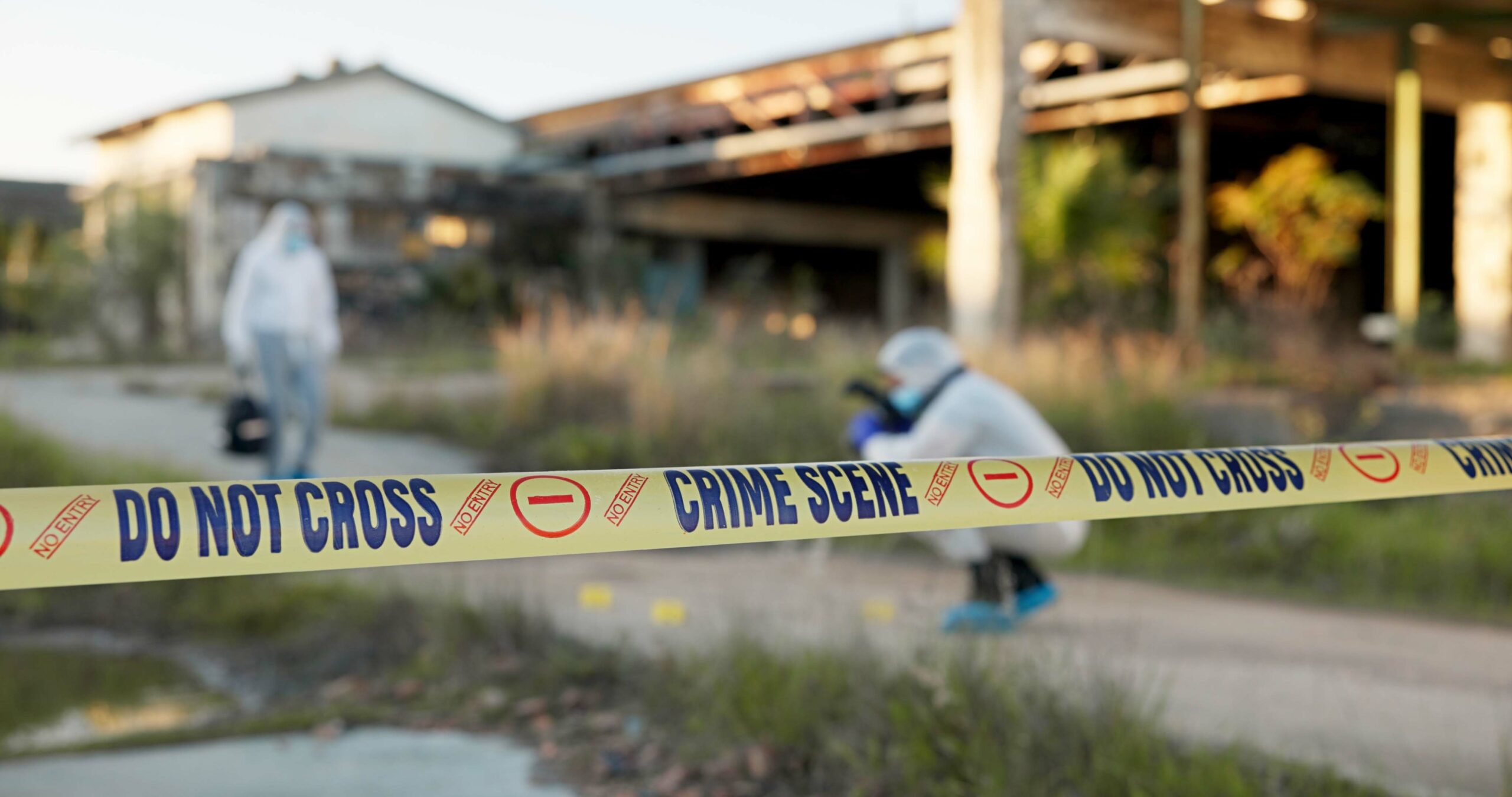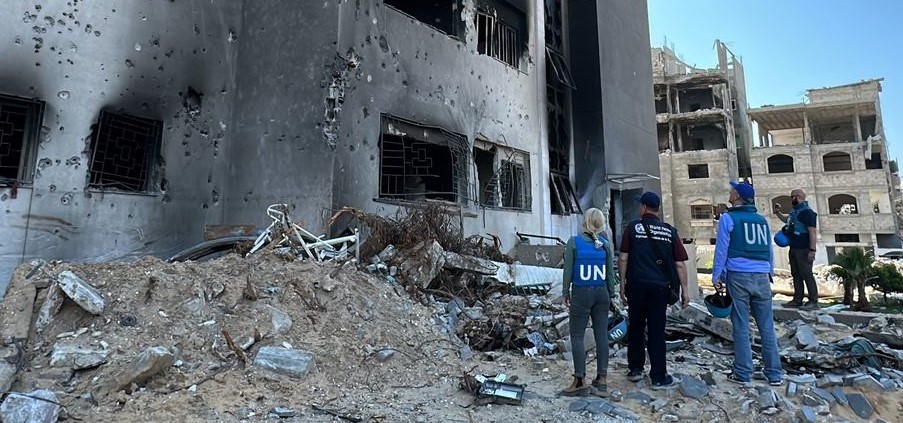Learn how the UN is supporting America’s efforts to curb the opioid crisis — and the work of one Congressional ally who was moved by the loss of his nephew to push for greater global cooperation, robust funding and a united front against transnational crime.
On New Year’s Eve in 2016, David Trone’s phone rang. It was the kind of call that guts you instantly. His 24-year-old nephew Ian, who had spent years trying to stay clean, was dead — found alone in a hotel room, the victim of a heroin overdose laced with fentanyl.

“Ian wasn’t a statistic,” Trone told me, sitting in his Bethesda, Maryland office nearly a decade later. “He had an amazing sense of humor and loved sports. He wanted to be a chef. We used to take him tubing on the lake. And then just like that, all of it was gone.”
That moment set Trone, a businessman and political newcomer, on a collision course with America’s deadliest epidemic. He would eventually run for Congress — twice, winning on his second attempt — and go on to become one of the country’s most noted lawmakers on mental health and substance use. He co-founded the Bipartisan Mental Health and Substance Use Disorder Task Force, built a coalition of 145 members and passed dozens of bills. In 2020, he co-chaired a blue-ribbon commission on synthetic opioids that helped reset how the U.S. approached fentanyl policy.
But what makes Trone’s story more than a story of grief transformed into action is what came next: a profound pivot outward. He began to see fentanyl not only as a domestic policy crisis, but as an opportunity for global systems change — one requiring diplomacy, international surveillance and shared infrastructure. One that no nation could solve alone.
And in that pivot, the United Nations emerged not as a bureaucratic backdrop, but as a lifeline.
A Death Every Five Minutes
Since 1999, opioids have killed more than one million Americans — roughly one every five minutes. But while the epidemic began with prescription drugs and surged with heroin, it reached a new level of devastation with the rise of synthetic opioids. Chief among them: fentanyl, which is 50 to 100 times more potent than morphine, and lethal at just two milligrams — about the size of a few grains of salt.
Unlike poppy-derived heroin, fentanyl doesn’t need fields. It’s engineered in labs. Its components — precursor chemicals — are often produced legally in China, then trafficked to Mexico, where cartels manufacture the final product and smuggle it into the U.S.
As one UN official put it, “This is no longer a street corner problem. This is a transnational supply chain problem. And it demands a transnational response.”
“This is no longer a street corner problem. This is a transnational supply chain problem. And it demands a transnational response.”
In 2021, as co-chair of the Commission on Combating Synthetic Opioid Trafficking, Trone and his colleagues visited Mexico City to meet with intelligence officials. The figure they were given was staggering: cartel-related economic activity, they were told, touched as much as a third of Mexico’s GDP. And it extended far beyond drugs — into gambling, real estate, even retail. (Today, that number is closer to one-fifth of the economy, an improvement, though still significant.)
“What we’re up against isn’t just a drug crisis,” the same UN official said, who asked not to be named. “It’s an ecosystem of criminal enterprise. And fentanyl is just one of their products.”
The U.S.-UN Frontline
To understand how fentanyl became a global threat — and how the U.S. is fighting it — you have to follow the thread to Vienna. There, in a quiet UN compound, the UN Office on Drugs and Crime (UNODC) operates as the world’s command center for coordinating action against illicit drug trafficking and transnational crime.
In 2018, UNODC launched its Integrated Opioid Strategy, a framework that now underpins much of the global response to fentanyl. The strategy includes real-time surveillance, improved legal frameworks and law enforcement coordination across countries. It helps nations distinguish between licit medical use of opioids and illicit trafficking of synthetics — a crucial balance, especially in countries where access to pain medication is still inadequate.
And critically, it connects the dots: from precursor shipments in Asia, to container ports in Central America, to pill mills in North America.
The U.S. has poured financial and technical resources into UNODC’s efforts. Through the bipartisan-supported Container Control Programme, U.S. funding helps train customs officials in Mexico, Guatemala and Honduras to intercept chemical shipments before they’re transformed into fentanyl. The Global SMART Programme enables U.S. and allied intelligence agencies to spot new synthetic compounds before they hit the streets.
“This upstream work is what saves lives downstream,” Trone said in a speech to Congress. “If you wait until the drug is on a street corner, it’s already too late.”
Narcan and WHO
The downstream work, however, is where the battle is most visible — and most human.
 When Ian died, naloxone (commonly known by the brand name Narcan) wasn’t widely available. It is now. And that change owes much to the World Health Organization (WHO).
When Ian died, naloxone (commonly known by the brand name Narcan) wasn’t widely available. It is now. And that change owes much to the World Health Organization (WHO).
In 2013, WHO added naloxone to its List of Essential Medicines. A year later, it released community overdose guidelines calling for broad access and public training. That policy shift helped accelerate the rollout of Take-Home Naloxone (THN) programs across dozens of countries — including the U.S.
Trone has taken that mission personally. As a member of Congress, he hosted regular Narcan training for his Capitol Hill staffers. One aide, he recalled, used Narcan just months later to save a man’s life on a DC street.
“We’ve trained thousands of people,” he said. “The worst part is it that that kind of training is just common sense now.”
Fragile Gains
In 2024, the Centers for Disease Control (CDC) reported a dramatic decline in U.S. overdose deaths — down 24% from the previous year. Boston — once a leading urban center for opioid use — saw a 56% drop in some of its hardest-hit communities. Experts credit a confluence of factors: broader naloxone access, expanded medication-assisted treatment, smarter policing and real-time intervention based on international data.
But the foundation of those gains — international cooperation — is showing cracks.
In January 2025, the Trump administration froze significant portions of U.S. foreign assistance. That freeze disrupted some security programs and delayed funding for critical international drug surveillance and enforcement work. U.S.-UN collaboration was put at risk just as emerging synthetic compounds like nitazenes began to appear — often more potent than fentanyl and not yet scheduled under international law.
At the same time, the Substance Abuse and Mental Health Services Administration (SAMHSA) and programs under the Justice Department supporting addiction research and community intervention lost more than a combined $1 billion in funding.
“These are draconian cuts,” Trone said. “You don’t starve the fire department when the fire’s still burning.”
“The overdose crisis doesn’t care about borders. It doesn’t care about party lines. And it certainly doesn’t care about headlines. We’ve got the tools and the partnerships. We have to use them.”
From Loss to Legacy
Today, Trone continues his work outside Congress, collaborating with organizations like Vera Institute of Justice to push forward criminal justice reform. He just returned from a visit to Germany to better understand their open prison model that emphasizes rehabilitation over retribution. He imagines a world where addiction is treated like the illness it is, and where second chances are a policy, not a platitude.
He’s also never been more adamant that global problems demand global partners. In the context of the global drug epidemic, for Trone, the United Nations is that key partner.
“This isn’t about the UN being perfect,” Trone said in remarks to a Congress briefing on opioids, “It’s about being necessary. We cannot stop the next wave of synthetic drugs — whatever they are — without global coordination. And we certainly can’t do it without funding the agencies on the front lines.”
“This isn’t about the UN being perfect. It’s about being necessary. We cannot stop the next wave of synthetic drugs without global coordination. And we certainly can’t do it without funding the agencies on the front lines.”
In a world fractured by nationalism and budget battles, that message may seem quixotic. But Trone’s view is pragmatic — and hard-won.
“The overdose crisis doesn’t care about borders. It doesn’t care about party lines. And it certainly doesn’t care about headlines,” he said. “We’ve got the tools and the partnerships. We have to use them.”
As we ended our conversation, he added:
“If we’d had those tools just a little bit earlier, Ian might still be here.”




